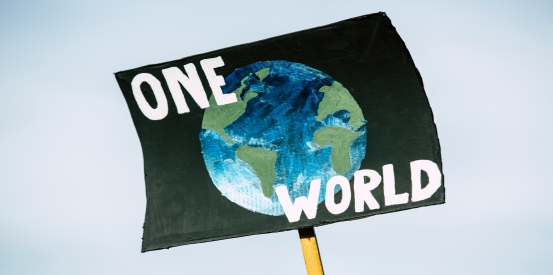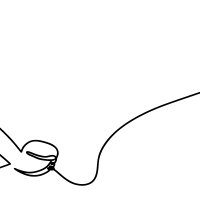Photo by Markus Spiske on Unsplash
Kathryn Holloway entered the charity sector in 2005. After working with BUAV for almost five years, she joined Friends of the Earth as a Direct Marketing Officer and has held a number of positions including Supporter Development Manager, Individual Giving Manager and her current role, Interim Director of Fundraising. We sat down with Kathryn to discuss how Friends of the Earth are making themselves heard in a crowded sector.
Kathryn, what are your main responsibilities as Interim Director of Fundraising at Friends of the Earth?
I oversee the management of our two fundraising teams, as well as the Supporter Care and Supporter Insight teams. Our key priority is inspiring and motivating people to donate to our campaigns to deliver real-world change on environmental issues because there is such an urgent need for government commitment and meaningful action on tackling the climate emergency.
I’m also responsible for driving our fundraising programmes and ensuring that our supporters have a fantastic experience whatever the touchpoint. My role focuses on active leadership and ensuring that we're making decisions and giving staff the right steer to deliver on the organisation's strategy.
With climate change such a hot topic, how are Friends of the Earth trying to stand out from the crowd?
Friends of the Earth is a local to global grassroots network - we believe that people power is the way to achieve the systemic change needed. It’s really exciting to see all the new voices appearing to call for action from government and businesses - and there are so many ways to get involved.
We want to empower people to get involved in their communities and work on what really matters to them. People could join or start a Climate Action group, depending on their availability. They can also take action online, make donations and spread the word to grow support. The main thing is encouraging people to get involved somehow, because we need to have as much breadth and depth in the supporter base to genuinely represent the communities we’re campaigning alongside, and to demonstrate to decision makers that this is what people want.
Has the rise in activist movements like Extinction Rebellion made it more difficult to garner support through a traditional charitable model?
There’s a great mix of organisations in the movement and each has their role to play. Extinction Rebellion are an important part of this movement and we support their efforts to push the issue up the political agenda. It takes that breadth to bring about the rapid change we want to see.
We're highlighting the need for urgent government action through our Climate Action Plan and for local climate action through the Climate Action Group network that we have built with our supporters. We've also strengthened our supporter base in the last couple of years with our numbers continuing to grow. The evidence is there that there is certainly space for various approaches, it's really about everyone encouraging people to get involved however they prefer to turn concern into action.
How can charities future-proof their fundraising model while maintaining their core supporters who subscribe to a more traditional model?
There has been a huge shift in how people view charitable organisations and the appetite people have for genuine involvement and for increased transparency. That's not just about the charity, but brands, companies and decision makers. It's a change in consumer and societal behaviour.
We've seen a huge change in the channels being deployed by charities. Some of this has been influenced by regulatory changes, while some has been driven consumer behaviour. Friends of the Earth has always been focused on grassroots campaigning and people power and we've always had a network of local groups as well as donors. However, in the last 15 to 20 years we've had supporters getting involved in different ways. We've seen an influx of donors coming through digital fundraising and have invested in this. We've been seeing a huge amount of organic traffic and income through digital, with most of our new donors now joining us through digital activity. However, the more traditional approaches such as print and telephone is still an important part of our fundraising.
When I joined Friends of the Earth 10 years ago, face-to-face was a huge part of our fundraising strategy. That was when this method was at its peak and at that point we probably had one of the biggest in-house street fundraising setups in the sector. Over time, however, numbers decreased. This meant we had to investigate alternatives to invest our budget more effectively. We moved away from street fundraising about five years ago and have been on a journey since. It's not just the case of switching to a new approach and then putting your feet up for another few years. It's a constant process of tweaking, improving and trying different things, trying to stay one step ahead of the game.
Print is still important for Friends of the Earth ─ we recently had a really successful inserts campaign using our Bee Saver Kit cash donation proposition ask. We are certainly not just working on digital, but it does make sense to prioritise because of consumer trends and costs. You have much more control over your spend and the different variables you're using, rather than having to commit tens of thousands of pounds up front with print activity and then crossing your fingers and hoping the responses come in. We’re also looking at how we can apply insights so that our campaigns are being driven by audience need. If people are responding via paper-based activity, then it makes sense to continue doing that. It's about knowing where your audience is, whether that's online or reading newspapers, and being responsive.
How important is it for Friends of the Earth to maintain positive messaging when discourse surrounding the climate crisis is so bleak?
We have to convey hope, but also reiterate that there is a huge urgency and an ever-closing window of opportunity to take action. We believe that we have solutions to these problems and by working with others we can ensure we're complementing each other. We have the desire and motivation of so many people across the world who want to see climate action. We just need to match the two together and call for that urgent change. It all comes back to our approach of people power and encouraging people to get involved however they prefer. By all doing our bit we can create something huge that can't be ignored.
What single factor do you think will impact fundraising the most in 2020/2021?
I think there's more importance now around values and being completely authentic and transparent. Many organisations in the sector have been doing work around that, but there's still more to be done. In terms of fundraising, I think it's about bringing it back to the basics of strong communication, how we influence people and develop relationships, learning from that and applying it to our fundraising. Whether it's with a mass audience or individuals, I think people getting back to basics is always going to be something that can improve fundraising. Many things end up becoming impersonal when scaled up, but I think there are always things we can do to bring in that personal touch and authenticity.





